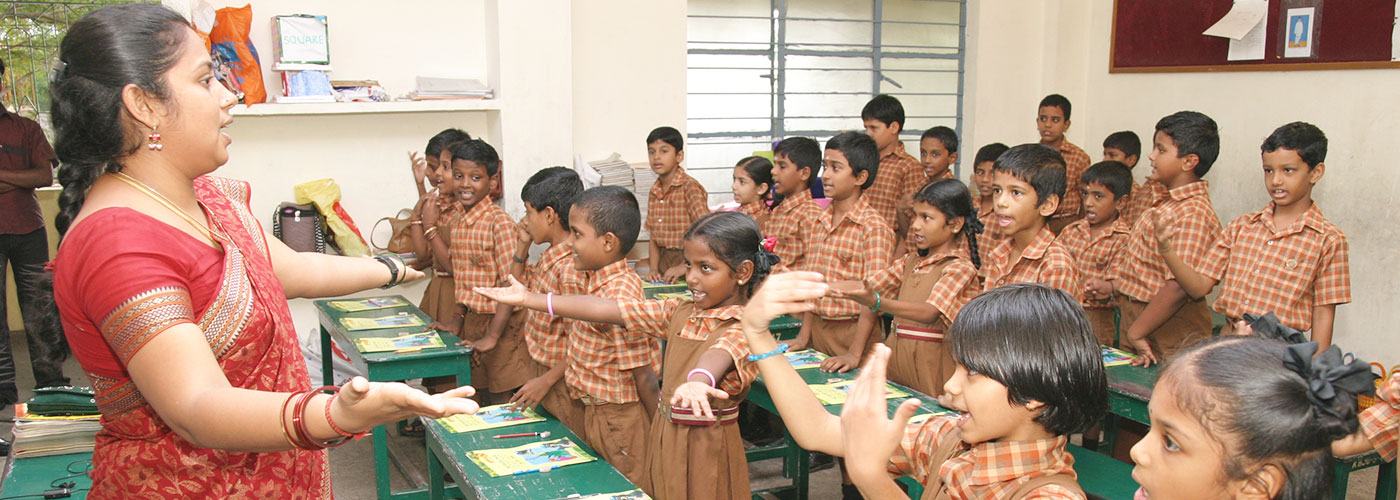India possesses one of the most complex language gaps in the world. With over 110 actively spoken languages, 21 of which are officially recognized, even something as simple as giving directions to a taxi driver becomes a convoluted game of charades and elaborate gestures.
Although the national official language is Hindi, Hindi-speakers only account for 30 percent of the nation’s 1.2 billion person population, with myriad dialects comprising that percentage. The other 70 percent of the country speaks a multitude of languages, shaped by the cultural diversity of each of its 28 states.
Most primary and secondary education is taught in the language native to the school’s local state. Yet the best higher-ed institutions teach exclusively in English, posing an obvious obstacle for many students, who likely learned English as a secondary or tertiary language. Regardless of specialization, they must attempt to master complex ideas in a language not native to them. As demand for learning English continues to grow globally, this same effect is beginning to take hold at an increasingly early age.
Hindi-speakers only account for 30 percent of India’s 1.2 billion person population. Tweet This Quote
C.P. (Vish) and Shobha Viswanath, who co-founded Karadi Path with Narayan Parasuram, noticed when their son started school that not only did this language gap exist for students trying to learn English, but also that the fundamental pedagogy for teaching languages was all wrong.
“While we teach a foreign language for a long time in the classroom, rarely do we actually learn the language.” he says. “We go through the processes, we go through the grammar, the conjugation, the vocabulary, and we pass our assessments. But then if we’re asked to think in the language, to speak in the language, to read a newspaper comfortably in that language, we fail.”
Having witnessed the way young children living in poor communities could pick up multiple languages quickly and organically, Vish and Shobha realized that the traditional methodology for teaching language was “drastically wrong.”
“We asked ourselves, what are the ways in which we actually learn a language within three to four months?” says Vish. “The moment we are placed in a location which dominantly speaks another language, how does that emotional and intellectual process actually work and convert into knowledge of that language?”
The motivation to learn finds its root through a very innocuous means. Tweet This Quote
Karadi Path was founded in response to these questions. In contrast to other language learning methodologies, it holds the principle belief that languages shouldn’t be taught by teaching words, meanings, or grammar, but rather contextually, through “incessant contextual communication.”
In other words, being placed within a specific context whittles down the vocabulary set necessary to communicate in that environment. Because the vocabulary set is small enough, you are actually capable of communicating through nonverbal means, certain keywords that lead to efficient guessing. Over the course of time, these instances solidify an experiential knowledge of that language.
“Nobody told you what something meant,” Vish explains, “but you figure it out through the context, through the stimuli, and through the various nonverbal communication cues that you receive.”
Those hand gestures and facial expressions you use when explaining directions to a taxi driver in a foreign company? They are called “context learning cues,” and they, alongside language, actually constitute the core of the Karadi Path methodology.
It’s just a question of being aware, looking at opportunities, being empathetic, and you will find that nature conspires to make us successful in contributing to society. Tweet This Quote
According to a study done by the State Council for Educational Research and Training, Government of Goa, India, one hour of Karadi Path equals eight to 11 hours of traditional teaching methods.
While the effectiveness of Karadi Path speaks for itself, Vish and his wife face an uphill battle when it comes to converting schools to their methodology and convincing them to build it into their curriculum.
“The whole world — including schools and linguistics experts — are saying that they are doing the right thing, and here is this teeny tiny company saying that they are doing it wrong,” Vish says.
Despite this challenge, Karadi Path is used in a total of 2,100 schools across India to date, and the company has trained between 7,000 and 7,500 teachers. By training these teachers, they will reach approximately 500,000 more children.
By working directly with schools, Karadi Path’s business model allows for the biggest impact possible without sacrificing resources or operational costs. The company derives half of its revenue from an underprivileged segment and half from a privileged segment. In doing so, the cost-structure of licensing their product directs 80 percent of the impact towards the underprivileged, and 20 percent to the rest.
One hour of Karadi Path equals eight to 11 hours of traditional teaching methods. Tweet This Quote
While the company aims to reach 12,000 schools in India in the next 24 months and to break into the university segment, their long-term vision is set on global impact.
“We are very uniquely and genuinely positioned to get the world to change the way it teaches language,” says Vish. “It would be great if we do it ourselves, but we would always be happy if others start developing alternate pedagogies, too.”
Ultimately, the Karadi Path methodology aims to harness what comes naturally to humans: finding connection through any means necessary.
“In a sense, the motivation [to learn] finds its root through a very innocuous means,” Vish explains. “It’s just a question of being aware, looking at opportunities, being empathetic, and you will find that nature conspires to make us successful in contributing to society.”



